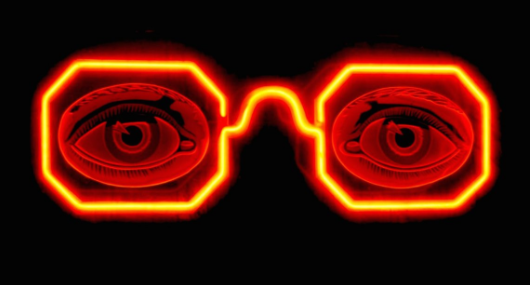
Mesmerising
for AeonIt’s surprising how stressful the first time can be. For months now, I’ve been researching the history of hypnosis for a book on the power of suggestion. But no study of hypnosis would be complete without trying it myself. Which is what led me to the door of my friend, the photographer Meghan Dhaliwal, with butterflies in my stomach. At a dinner party a few nights before, I’d mentioned my plan to learn hypnosis. Meghan had piped up immediately: ‘Oh! I want to get hypnotised! Can you hypnotise me?’
A hypnosis researcher had pointed me to a script – or induction – that I was to read in order to hypnotise Meghan, but I’d never even seen someone hypnotised before, let alone been the one doing it.
My only prior experience with hypnosis was onscreen. I knew that certain people can make others drop into a trance by looking or talking at them. Sometimes, a pocket watch would be involved. In the movie Now You See Me (2013), a stage magician hypnotises a guy in the audience to rob his own bank. In The Manchurian Candidate(1962), a man is programmed to kill the president. Hypnotists occasionally have twirling spirals in their eyes, and cartoon snakes are especially deft. But if you screw up – as happened in Office Space(1999) – the victim might be permanently altered or harmed.
I didn’t know, back then, that I had simultaneously underestimated and overestimated the power of hypnosis, a practice long tied to madness, miracles and the secrets of the occult. While it turns out that hypnosis isn’t the key to mind control or a way to contact the dead, it remains a potent means of healing some kinds of illness, easing depression and overcoming pain – hardly magic, but one of the great overlooked brain phenomena of our age.
Some trace the first hypnotists back more than 4,000 years to the sleep temple of the Egyptian priest Imhotep; others to ancient Greece. The original source of the induction techniques familiar today is probably the Roma, or Gypsies, who would have brought hypnosis from India to Europe 1,000 years ago.
The modern incarnation of hypnosis can be traced to the 18th-century German priest and exorcist Johann Joseph Gassner, who believed he had the power to channel God’s word through his own voice. By speaking in a calm and commanding tone to his patients, he could reportedly rid them of all sorts of demons that today we might call epilepsy or muscle spasm. In one case, he is said to have commanded a patient to slow down his pulse in one arm while speeding it up in the other.
Gassner’s work was spotted by Franz Mesmer, a German gentleman scientist who theorised that magnetism controlled the tides (it doesn’t), planetary movement (it doesn’t) and even health (it really doesn’t). He wore a striking silk coat with a silk liner to keep his magnetic power in, and would often carry an iron rod to wave over people, or treat them using small magnets.
When Mesmer saw Gassner, a light went off. The priest wasn’t channelling God, he was channelling the magnet juice that permeated the Universe (which Mesmer attributed more to Gassner’s metal cross than to his voice).
Soon, Mesmer was doing hypnosis, too. In Paris, he had a salon where he would ‘mesmerise’ people for hours at a time until they were either cured or had foaming-at-the-mouth fits. Many of his clients were women, and later scientists attributed his effect to the malleability of their gender, but it was more likely due to their gender’s boredom in 18th-century Europe.
Mesmer’s most famous client was Marie Antoinette. Her husband Louis XVI at first welcomed Mesmer to Paris but soon became suspicious and formed a panel of eminent scientists – including Antoine Lavoisier, the father of modern chemistry, and Benjamin Franklin, one of the founding fathers of the United States – to evaluate Mesmer’s techniques. The result was a wonderfully entertaining scientific treatise that discredited Mesmer’s magnets and foretold the era of placebo-controlled trials. But the team also sent a secret memo to the king, pointing out that a person under the power of hypnosis would be easy to sexually assault.
Not long after, Mesmer was roundly discredited; but, while he faded into obscurity, his technique did not. The Goan monk Abbé Faria – whose life included efforts to topple two governments and a stint in the French island prison Château d’If – picked it up from one of Mesmer’s students in the early 19th century. Except Faria said that magnets had less to do with mesmerism than the mind of the person being mesmerised.
In the 1840s, the Scottish surgeon James Esdaile stumbled on hypnosis quite by accident and claimed to have performed 300 surgeries using it as anaesthesia (chemical anaesthesia not having been invented yet). His speciality was painful surgeries involving a build-up of fluid around the scrotum but hypnosis was used for amputations too.